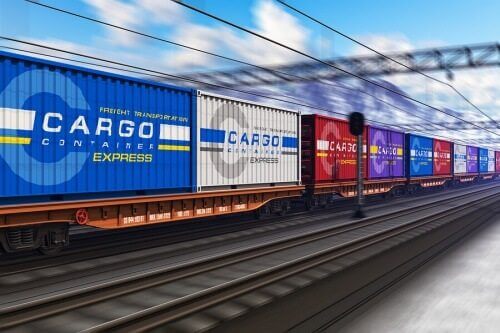Intermodal Rail vs. Over the Road Trucks: The New Direction of Shipping
Choosing between intermodal rail and over-the-road trucking isn’t always straightforward—especially for manufacturers and distributors with complex freight needs. Each method offers unique advantages in terms of cost, reliability, and availability. In this blog, we’ll break down the key differences to help you determine which shipping strategy best supports your business goals and logistics requirements.
The Economics Of Intermodal Rail vs Over The Road Trucking
When evaluating freight logistics, affordability and dependability are top priorities—especially for manufacturers and distributors aiming to stay competitive. Getting products to market cost-effectively while ensuring timely delivery is essential for maintaining profitability and a strong business reputation.
Businesses with tight inventory control may benefit from integrating intermodal transportation into their shipping strategy, especially when balancing cost with reliability. Ultimately, choosing the right method impacts not only your logistics partners but also your overall supply chain performance.
Financial Benefits Of Intermodal Rail Shipping
Cost is often the first consideration when selecting a freight shipping method—and intermodal rail offers significant savings without sacrificing reliability. By using standardized containers that transfer seamlessly between rail and truck, businesses can reduce shipping costs compared to dedicated over-the-road trucking.
Lower transportation expenses mean reduced overhead, allowing manufacturers and distributors to stay competitive in their markets. Additionally, intermodal rail shipping helps minimize fuel surcharges, which can fluctuate dramatically with rising fuel prices. By integrating rail into long-distance shipping, businesses gain more predictable costs and better control over their logistics budget.
Environmental Benefits Of Intermodal Rail Shipping
Today, more businesses are factoring environmental impact into their logistics decisions—not just as a moral responsibility, but as a long-term strategy for financial sustainability. While many assume that eco-friendly shipping comes at a higher cost, intermodal rail proves otherwise.
Rail transportation produces significantly fewer emissions than over-the-road trucking—studies show that incorporating rail into your freight strategy can reduce pollution by over 40%. By shifting part of your shipping to rail, you not only lower costs but also reduce your carbon footprint.
As sustainability becomes a growing priority for manufacturers and distributors, choosing greener logistics solutions like intermodal rail can enhance your brand reputation and contribute to a healthier planet.
Conclusion: Choosing The Right Freight Strategy
Over-the-road trucking remains essential, handling more than half of all goods transported across the U.S. daily. Its flexibility and reach make it indispensable to modern supply chains. However, savvy shippers understand the value of integrating intermodal rail into their logistics strategy—especially on competitive lanes where transit times and capacity are key considerations.
With the trucking industry facing driver shortages and capacity constraints, intermodal rail offers a reliable alternative that can reduce costs, improve efficiency, and support long-term sustainability. Avoiding rail due to unfamiliarity could mean missing out on strategic advantages that help your business stay competitive.
At Freight-Specialist, we’re here to help you navigate your shipping options with confidence. If you have questions or need guidance before scheduling a pickup, don’t hesitate to reach out. Our team is ready to support your freight needs with dependable, cost-effective solutions.





